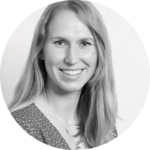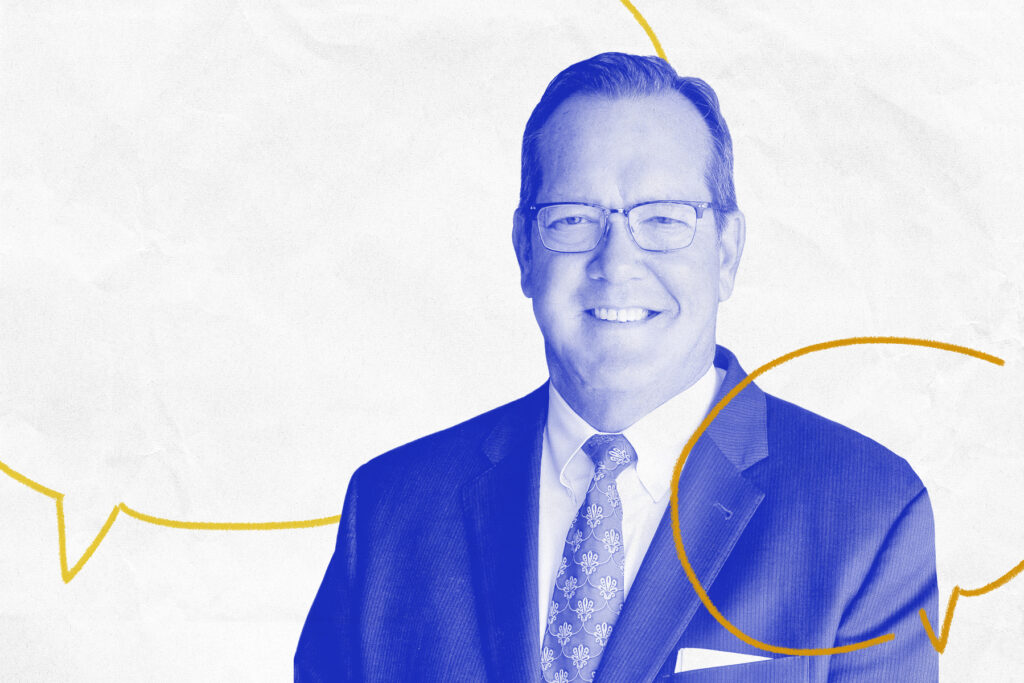Coffee has been a passion of mine since high school, when I worked at a café in Napa, my hometown. There, I developed a taste for bold brews and caffeinated intellectual conversations. It’s still a joy when I get to combine the two in a local coffee shop with a North Texas business leader.
I recently met up with Craig Scheef at Ascension in Dallas’ Design District. The flagship locale of the brand’s six North Texas locations was recently expanded to double its original size. Founded in 2012, Ascension is known for its Cup of Excellence program, which selects two of the world’s best roasts to serve—from an applicant pool of 180 roasters making 1,800 different brews. I recommend stopping for brunch and enjoying the café’s light bites, too.
Scheef is the founder, CEO, and chairman of Texas Security Bank, a Dallas-based bank that supports entrepreneurs and business owners. A Plano native, he played football in Oklahoma before entering the world of finance in middle market lending, then launching his own business. Vanilla almond milk latte in hand, he shared lessons from his journey and industry trends he sees percolating.
D CEO: What stands out to you about growing up in Plano?
Scheef: “We moved to Plano in 1994, right after my fifth-grade year. My father was a civil engineer, so we lived all around the country and out of the country—in Puerto Rico and the Bahamas. He would do big construction projects, and Dallas in the mid ’70s was really starting to grow, so there was plenty of work. I graduated from Plano High School.”
D CEO: Then, you went to play college football in Oklahoma?
Scheef: “Yes. It was a great experience. … It was probably best for me because in high school, I was a little wild. At first it was kind of rough, but [football] was the only thing I had. My parents divorced my senior year in high school. I had an older brother and an older sister, and when my mom moved, we didn’t have a lot of money for college—not that my dad didn’t make a lot of money. For whatever reason, that’s just the way it was.
“So, after I signed the commitment to play football at East Central, I got really sick. I went from 210 pounds to 160 pounds. Doctors were really concerned. They did a bunch of tests and even did exploratory surgery. Once they sewed me up, my symptoms went away. But nonetheless, I was very skinny offensive lineman, and I was afraid that I was going to lose my scholarship. I never was a particularly good student in high school, but I started to really focus on it.
When you play Division II football, there are only a small amount of scholarships. We only had 18 scholarships for an entire team, and most people who did have scholarships had partial scholarships. I was on full scholarship. So, it forced me to be a very good student, and do well. Eventually, I got healthy and started doing well athletically, too. It was just a very significant growth period in my life that was prompted by desperation, which is what happens with a lot of people: We kind of have to be brought to our knees.”
D CEO: How did you get into banking, and what led you to launch Texas Security?
Scheef: “I went to work for First Interstate, which is a California-based bank, and they eventually sold out to Wells Fargo. While I was at Wells Fargo, I was in their middle market lending division; they defined it as businesses making $50 million to $500 million.
“After 15 years at Wells Fargo, I had the opportunity to work for Bank of Texas. It’s owned by Bank of Oklahoma, which had come into Texas and bought a bunch of independent banks to really invest and build a footprint and a franchise to pay off their debt. They had bought one over in East Dallas, where I lived at the time, and asked me to run it. It was a smaller bank, so the size of the loans that that bank could do prior to bank of Texas buying it [were smaller]. It was full of entrepreneurs who were running their own businesses.
“As I got to know these business owners, they would share their stories of how they got started, and I realized that the majority of people who take that risk and of starting a new business don’t make it. And the majority of people who start companies, if they have a college degree, it’s usually not in business. So, it would be like you going out and starting a business. You were a journalism major?”
D CEO: English and psychology, but not business.
Scheef: “So, say you were like, ‘I have an idea. I’m going to go start a business.’ You don’t know anything about accounting, how to fund a business correctly, budgeting, forecasting, benchmarking, cybersecurity, hiring people and HR.
“The other thing that I realized is there is something about our free enterprise system. The level of wealth and prosperity that we have in this country—and we are not a perfect country—it is a direct result of our free enterprise system. People pour into this country, and a lot of them are looking to exercise free enterprise. That’s what I learned, too: A lot of the bank’s customers were first-generation Americans. They didn’t come here to work a new job; they wanted to own their own business, and they really couldn’t do that in another country.
Small businesses, as defined by the SBA, create 8 percent of the net jobs in this country. They also pay the vast majority of taxes in this country. I really felt that [small business owners] were under-appreciated. I got the idea, ‘What if there was a bank that focused exclusively on entrepreneurs and their businesses?’
“We provide continuing education for bankers—because that’s our primary connection with these business owners—on all things about running the business. [Entrepreneurs] look just to us to know banking, but our value proposition is these bankers really know a lot about running a business. So, a business owner who is struggling with a particular area of their business—HR, collections, accounting—that banker is in a position to have a rich conversation with the business owner. That’s the first piece.
“The second piece is just continuing education on a monthly basis that’s a la carte. We do that through our speaker series. We do it virtually, and we will have between 100 and 500 business owners plugging in.”
D CEO: That’s impressive. As you look to the future, what industry trends are you seeing?
Scheef: “The banking industry has a significant number of existential threats facing it as we move forward. The first one would be succession. When I started banking, there were about 18,000 different banks throughout the country. Today, there are fewer than 5,000, and that’s being driven by a number of things.
“One is just the average age of a banker. The average age of bank CEO or president for an independent bank today is 68. The average age of the director of the bank is 72. So, you can see why so many banks are selling. The other part of that is technology is influencing banking more and more. I have to think about, and other banks like ours have to think about, ‘How is that business owner going to want to consume banking products and services 10 years from now, and what does that entrepreneur look like?’
“…banking, conventionally as we think about it, is ripe for disruption—significant disruption.”
Craig Sheef, Texas Security Bank
“So, you see the disconnect there between the person who’s providing the service and their perspective—think, male, White, 70. So, technology and investment in technology, and consumption of information about emerging technology, in the banking space is a requirement to survive in the future. Those people aren’t going to do that. So, we lean in very heavily to that.
“What you’re going to see is there is a ton of money, private equity money, kind of risk-based money, that recognizes that the financial services, banking, conventionally as we think about it, is ripe for disruption—significant disruption. There are some schools of thought that the existing ecosystem of banking is least prepared to have a transformation shift in how we view banking services. So, that’s a risk.
“The other thing is just talent. When I decided, ‘Hey, banking looks pretty cool and sexy and interesting, and stuff like that,’ it ain’t anymore. So, competing for top talent against other industries that might be more intriguing or appealing becomes more difficult.”
D CEO: Wow, a lot to think about there. How does all of this play into your goals for 2022 and beyond?
“We’re pushing west. We have three locations right now. We’re planning on opening a fourth location—it will be kind of our first toehold to Tarrant County. We signed the lease on a place in Southlake. There are a lot of good trade areas that fit our customer base very well. If you go down into the Mid-Cities, Hurst, Bedford, Keller, Southlake, Grapevine, Colleyville, and in Fort Worth proper, [there are] a lot of businesses that match up with what our offering is.”
This conversation has been edited for clarity and brevity.
Author




